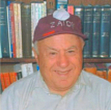Sidney Krimsky's Blog
February 13, 2018
The Things I Learned from the Art of Giving Back

In many of the places where I resided, I got to live in communities of different people who led different lives. In these places, I met people who inspired me, who taught me many things, and who loved me during the best and worst times. They were my teachers, my protectors, my friends. They helped me get through my problems, made me wiser, and made me happy. These people did not demand anything in return. And as my way of thanking them, I always did my best in giving back to my community because I also wanted them to feel what I felt and, hopefully, they can pass this form of gratitude on to others.
For me, the highest form of giving back to the community is to give our time. We can give money, but money can be earned. We can share our talents and skills, but the more we use them, the more we improve our own craft. But once we give our time, we can never get it back.
Even so, I learned that in giving our time, we attain our greatest achievements. Knowing that we participated in the growth of the community we live in not only feels great, it is a great legacy to the world.
The best expression of giving time is volunteerism. In my life, I got to volunteer a lot of times. I was inspired by my father, who also gave his time to volunteer as one of his ways of giving back to the community. He had set a good example for me and for the people that he helped. I grew up watching him working in diverse ways to help others. When I was younger, my father volunteered as an air raid warden during the early years of the war. He would go outside and tell people to close their curtains and window shades so that German troops could not track them down. As far as I know, he was proud of what he did. And I wanted to be like him also.
When I grew up and entered school, I learned many things that helped me understand what the value of giving back to your community is. I volunteered to take on extra workload in school. I worked as a cafeteria squad lieutenant and a book club monitor for English subjects (that is, unboxed, organized, sold, and repackaged books for the next day). I also volunteered to present the homework assignments on the board every day. Instead of feeling burdened by the additional tasks on top of my studies, I felt more satisfied, fulfilled, and determined.
Years after I graduated and worked, I volunteered to teach STEM subjects as part of the RE-SEED (Retired Engineers and Scientists Enhancing Education through Demonstrations) programs that dealt with resistant students. It was my way of giving back to the community, particularly to my teachers who taught me beyond what they were paid to do.
In the summer of 1972, when TV programming started to improve, I was one of the volunteers who served on the first Community Antenna Television Committee (CATV). We conducted our own analysis of the cost to viewers and benefits to the public. We also organized meetings with various departments to assess if there is a need to provide them CATV.
I also volunteered at the annual member meeting to represent the tenants with greedy and unjust landlords in Brookline, Massachusetts. I wasn’t selected, though, but it didn’t stop me from looking for other ways to help put justice to this serious problem. Together with other concerned citizens, we formed the Brookline Tenants Council and fought for rent control. It strengthened my relationship with others, and it lessened the load of the problem because we knew that we were not alone in that struggle. We were constantly energized because everyone was eager to help. It was one of the most memorable events of my life.
Giving back did not only benefit those whom I’ve helped. It also benefitted me in ways that I could not comprehend. Knowing that there is someone out there who needed me and my help was enough reason to wake me up every day.
We live and work not just for ourselves, but for others. Do you agree with what you read? I invite you to like my Facebook page and follow me on Twitter and Goodreads to read more true and inspiring stories. Grab a copy of From Brooklyn New York To Brookline Massachusetts now!
The post The Things I Learned from the Art of Giving Back appeared first on The Odyssey of Sydney Krimsky.
February 6, 2018
Establishing Rent Control

Back in the late 1960s when my family and I decided to move into a three-bedroom apartment on the third floor of a building in Brookline, Massachusetts, managed by Herbert Breitstein and owned by Maurice Gordon, I thought it was perfect. The manager seemed accommodating enough to repair and paint the rooms for us. Dorothy got into Northeastern University and earned her MA in secondary school. It was a spacious apartment, which was perfect to raise our firstborn son. Or so I thought.
In the autumn of 1968, problems arose. We felt that the apartment could not supply a steady warm temperature. My wife and I were concerned that our son will get ill if the problem with inconsistent temperature isn’t fixed, so I decided to check the condition of the heating system. To make the long frustrating story short, the heating system needed fixing. So I went to present this concern directly to Maurice Gordon, the landlord. I expected him to talk to me in person, but I was informed by his secretary he was not available at the time. Like a custodian, she assured me she will immediately inform her boss regarding my concern. And just like that, I was dismissed. My message? They were ignored, unfortunately.
I never stopped in communicating my concern. Winter was slowly creeping in all corners of our apartment. I wrote a letter to the landlord, declaring I will put my rent into escrow if he will not make the heating system function. Instead of receiving an action plan for my concern, the landlord sent me a letter stating that I need to pay the rent. I wrote back, informing him again of the absence of heat in the apartment. What I received in response was the threat of a notice of eviction if I don’t pay my rent. I did not want my family to be exposed to an eviction. And I felt helpless when I conceded to pay the rent.
Around that time, I learned that there are several big landlords like him living in Brookline, sucking the money out of our pockets and kicking out senior citizens from their apartments and driving out families away from Brookline. These greedy landlords put in university students to increase their income.
From this news, I realized that concerns about rent control should reach the town’s governing body. During that time, Brookline’s legislature, consisting of 240 citizens who were elected by the townspeople, would hold yearly town meetings. The purpose of the annual meeting was to discuss and resolve issues concerning our town. Selectmen were usually long-term servicemen of Brookline. Still, I tried to volunteer myself in to express the rent disputes.
I wasn’t pick by the board though. But I was still very determined to do something. My passion for justice was noticed by other volunteers who were also not picked. I was joined by Sumner Kaplan, Attorney Herbert Goodwin, and Harvard physicist, Craig Bolon. We three formed the Brookline Tenants Council (BTC). We were soon joined and led by Herb Goodwin, who has excellent legal knowledge and experience.
Our group quickly grew to twenty people who worked together to urge the building and health departments to implement rent control ordinances in the town. We met constantly to discuss civil rights and the unfair treatments of tenants by their greedy landlords. We pushed for strong laws to safeguard tenants from being evicted, asked for ridiculously high rent, and victimized by code violations.
We were warned, though, by the attendees that rent control regulations may cause the investment to plunge, but all we ever wanted was to protect our rights as tenants. The BTC came up with an action plan: implement a survey to the town legislature members on the importance of rent control laws, collate the gathered information, and publish it in the newspapers. With the help of our leader and spokesperson, Herb Goodwin, we were able to gain recognition. Also, a majority of the participants supported the proposed bylaws.
It was not easy to gain the trust of the town meeting members. We had to go door-to-door and explain to the signees why rent control is good and ask them their support for the noble cause. In all the years that we collected information, we never once escaped criticisms, accusations, and discouragement. Above these negativities, we managed to come on top.
Little by little, we harvested the fruits of our labor. Our cry had been recognized. The town meeting members established strong rent control bylaws to limit rent increases. More and more tenants gain more confidence to report avaricious landlords. With more and more pro–rent control supporters, renting became less of a headache to tenants. We were victorious.
I’m glad I took part in the service of my fellow tenants and my country. It’s great that there are people like Herbert N. Goodwin who advocated for the protection of tenants from the voracious landlords. Though, there were still persistent problems—that is, the demand for apartments exceeded the supply and all other problems that affected the decisions of lawmakers—we knew in ourselves that we have done our best to raise awareness of rent code violations and reinforce the rent control legislation. A newcomer as I was in the Brookline neighborhood and novice to the world of politics and administrative process, it did not hinder me to always put a strong foot forward in all that I desire to accomplish.
Greedy landlords are a major pain. Do you agree with what you read? Leave a comment below or you can find me on Facebook, Twitter, or Goodreads. Grab a copy of From Brooklyn New York To Brookline Massachusetts now!
The post Establishing Rent Control appeared first on The Odyssey of Sydney Krimsky.
January 31, 2018
Influence in Life: Shaping the Future

Everyone idolizes someone, we look up to artists, professors, random people online, and our own parents. The values we practice are all because of the people who influence us. A person’s influence in life can go as far back to their childhood, which, in this case, makes our parents the first people who influence our lives.
As we grow up, we’ve learned to discover the world on our own. We got a chance to meet people who can create a big impact on our lives. So, the question is, Who has the most influence in your life? When we look up to a person, it’s because we share the same values with them.
The reason we adore someone is because that person gives us a positive attitude in life. When asking a person who influences us, most of us would say our parents have influenced us the most, especially our mothers. It’s because mothers are the first people who teach their children values, manners, and other things essential in life.
Most of us believe our mothers have the biggest influence in life because of the positive outlook she has for us. Some would say their fathers influenced their lives because fathers have taught us how to remain strong when things start to fall apart. Parents can be an influence in life because we’ve been with them through childhood and early adulthood in which they helped mold our future.
Besides from parents, our friends can also influence our lives. The influence of friends in our life is a long list of both positive and negative. That’s why our parents have always told us to choose wisely the people with whom we spend our time. Friends are blessings sent from heaven. Some people open up more to their friends about problems rather than their own family.
From dating tips to fashion tips, our peers can really influence us. Friends can sometimes make or break a person’s future, especially if you let your friends get under your skin. Some teenagers start using narcotics because of the influence of their peers, and that is one bad side. Remember, though, friends can also lead a person to a brighter future.
When you surround yourself with people who have the same goals as yours, no doubt you will help each other to achieve your life goals. When you surround yourself with people who are a good influence in life, this can also influence you to making the right decisions for your future.
There are also people who are inspired by great philosophers, writers, and artists. To be influenced is a normal thing for a human being, especially if these influences help mold a person’s life. Although we should make sure to surround ourselves with people who mold us to become better and not the other way around, the negative also helps mold us to become the person we aim to be. As Henry Drummond says, “The people who influence you are the people who believe in you.”
Want to know how people in our lives can influence us? Leave a comment below or you can find me on Facebook, Twitter, or Goodreads. Grab a copy of From Brooklyn New York To Brookline Massachusetts now!
References
Chowdury, Sanchita. 2013. “How Friends Influence Your Life.” Boldsky. August 3. Accessed January 26, 2018. https://www.boldsky.com/relationship/beyond-love/2013/how-friends-influence-life-034582.html.
Cruze, Rachel. n.d. “4 People Who Have Influenced My Life.” Accessed January 26, 2018. https://www.rachelcruze.com/topics/everything-else/4-people-who-have-influenced-my-life
The post Influence in Life: Shaping the Future appeared first on The Odyssey of Sydney Krimsky.
January 23, 2018
The Benefits of Enlisting for the US Air Force

About the US Air Force
The United States Air Force (USAF) is one of the largest and technologically the most advanced air forces in the world. The USAF is the United States Armed Forces branch that is responsible for the aerial and space warfare.
The main responsibility of the US Air Force is to provide air support for land and naval forces and aid in recovering troops in the field. The USAF purpose as defined by the US Code are:
To maintain and preserve the peace and security, and to provide defense of the United States of America, Commonwealths, the Territories, possessions, and all areas occupied by the United States.
To support the national policy
To implement national objectives
To overcome any nations responsible for aggressive acts that imperil the peace and security of the United States
Or the USAF’s mission states, “Fly, fight, and win in air, space, and cyberspace.”
Requirements and Standards
There are lot of factors that will shape your journey with the air force. These include your goals, current situation, and your unique background. You could joining the air force as an officer or an enlisted airman.
A career in the US Air Force is very admirable, full or opportunities, and very rewarding. The air force maintains high standards, and interested individuals must meet or even surpass the requirements, which are the following:
Age:
For enlistment, you must be 17 (18 for GED holders) and not older than 39 years.
To join as an officer, you must be 18 years old or older. The age limit for air force officer training school is 34 years old.
You cannot be younger than 18 or older than 48 years old if you want to join as a healthcare, law, or ministry professional.
Height and Weight:
There are strict height and weight requirements. The air force requires both male and female airmen to manage their weights according to the air force standards. Check here to know if your weight is in the acceptable limit according to your height: https://careers.airforce.com/height-weight/
Sexuality
The air force does not require applicants to reveal their orientation. Openly gay, lesbian, or bisexual applicants will be evaluated according to the same criteria and requirements asked to others who want to join the Armed Forces.
You can check www.airforce.com/how-to-join/ for the other requirements. Joining the air force is a life-changing decision. Take time to learn all about the aspects of air force life, prepare both your mind and body for rigorous training, and start your journey to fulfill important roles in the service of our country.
Training
The US Air Force Basic Military Training, or BMT, or also known as boot camp is an eight-and-a-half-week program. The boot camp is composed of physical and mental training to mold and hone all trainees to become an enlisted airman.
After basic training in the air force what happen is that those who passed are assigned to their appropriate technical training school for their Air Force Specialty Code. The technical training can last from a month to over two years.
Benefits
Airmen do not only earn paychecks while they train and serve. The air force continues to nurture the airmen to help them grow with advanced training, opportunities for advancements in their careers, and other benefits. The moment airmen put on their uniform, they are eligible to receive additional compensations based on their assignments and where they are stationed. Airmen also receive housing allowances, tuition assistance, generous retirement packages, and 30 days paid vacation annually.
I was very fortunate to have served in the USAF as an engineer. I do believe that the air force had helped in my personal development as well as my career advancements.
Do you have any questions about the air force? Are you planning to enlist? Leave a comment below or you can find me on Facebook, Twitter, or Goodreads. Grab a copy of From Brooklyn New York To Brookline Massachusetts now!
References:
U.S. Air Force. Accessed November 09, 2017. https://www.airforce.com/mission.
“Excellence in all we do.” U.S. Air Force – Meet requirements. Accessed November 09, 2017. https://www.airforce.com/how-to-join/prepare-for-success/meet-requirements.
“Get More Than Just A Paycheck.” U.S. Air Force – Pay & Benefits. Accessed November 09, 2017. https://www.airforce.com/careers/pay-and-benefits.
The post The Benefits of Enlisting for the US Air Force appeared first on The Odyssey of Sydney Krimsky.
January 17, 2018
What Is Social Justice?
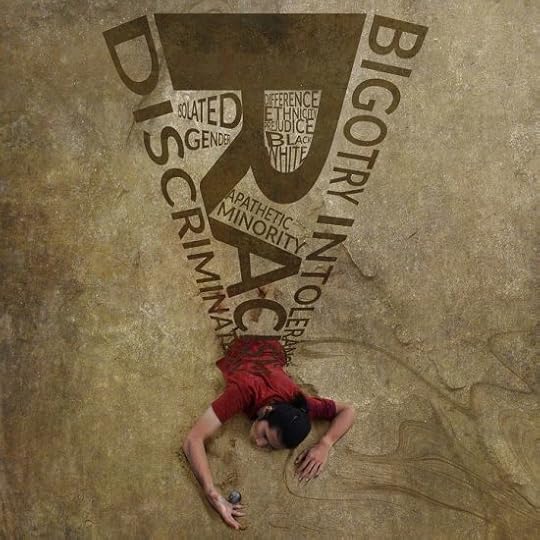
Social Justice
How do you define social justice? It is hard to give a structured definition to social justice. However, it can be stated that social justice is the understanding that everyone, regardless of gender, race, characteristics, and socioeconomic status, is entitled to have the same political, economic, and social rights. In a sense, social justice is equality.
Social Justice Issues
Intersocial treatment focuses on how one group of people within a region treats another group. The said group’s basis for mistreatment or discrimination against the other is due to their belief about the other group. This is where social justice comes into play. In my opinion, social justice issues start with prejudice. For example, around the world there is a wage gap issue. Most women earn less compared to their male counterparts. This issue started with the idea that men are better than women, thus they do more work and deserve bigger salary. This is just one of the social injustice and discrimination issues we are facing today. Here are other human rights and social justice issues that are prevalent around the world:
Racism. Prejudice against someone because of their race, thinking that their race is superior.
Sexism. This is typically against women—stereotyping people based on sex.
Ageism. The discrimination based on a person’s age.
Heterosexism. The prejudice against homosexuals based on the idea that heterosexuality is the only normal orientation.
There are other social injustices happening in our society today, including some government regulations that purposely or otherwise discriminate against a group.
The Holocaust
I am a first-generation Jewish American. Both of my parents are European Jews. My family is lucky to be living in America when World War II happened. We’re basically spared from the Holocaust.
My family and other Jewish families in our neighborhood heard very little about the Holocaust during the war, and my parents said little about the tragedy. In 1945, I sneaked into a film screening, and this was the first time I learned of the evil of the Holocaust. The filmed showed the conditions inside the camps.
The Holocaust happened because Hitler’s Germany believed the Aryan race was the superior race. They also believed that the Jewish race was inferior and was to blame for everything. This prejudice resulted in millions of innocent Jews, including children, massacred.
My Views
Growing up in mostly Jewish community, although my parents were not that religious, shaped my view on justice, ethics, and morality. My life experiences, failures, and success, as well as my study of the Torah, also helped in molding my morality.
Many Jewish people, including myself, have asked why the Almighty hides his face during the Holocaust. Rabbi Gedalia Fleer’s answer is the best I have heard so far. The rabbi lectured that the Almighty has a covenant with Satan to allow “free will” during the creation. Free will allows people to do both good and evil. However, the Almighty also has another covenant, this time with Abraham, Isaac, and Jacob. The covenant is not to allow the Jewish people to disappear. And he has a covenant with Moses that will never allow the Torah to disappear. Because of that covenant, there is resurgence of Jewish practice around the world after the WWII. The study of the Torah also spread worldwide.
Justice
In the Torah and the teachings of rabbis, Jewish people are forbidden to stand idly by while their fellow men are treated unjustly. As the scripture says, “Learn to do good, seek justice, strengthen the victim, do justice for the orphan, and take up the cause of the widow. Go forth, now let us reason together” (Isa 1:17–18).
Do you have any questions about social justice? If you want to know more about social justice, leave a comment below or you can find me on Facebook, Twitter, or Goodreads. Grab a copy of From Brooklyn New York To Brookline Massachusetts now!
References:
Hume, Gemma. 2014. “What is social justice and how can we achieve it?” Practical Action, February 20. Accessed November 02, 2017. https://practicalaction.org/blog/news....
Mullikin, Mary Beth. n.d. “Social Justice Lesson for Kids: Definition, Issues & Examples.” Study.com. Accessed November 02, 2017. http://study.com/academy/lesson/social-justice-lesson-for-kids-definition-issues-examples.html.
Pachamama Alliance. n.d. “Social Justice Issues.” Accessed November 02, 2017. https://www.pachamama.org/social-justice/social-justice-issues
The post What Is Social Justice? appeared first on The Odyssey of Sydney Krimsky.
January 9, 2018
Working in a High-Technology Company for Defending the United States against Missile Attacks

The threat of missile attacks has been dominating the headlines these days with the belligerent intimidations from North Korea and fears of Iran’s growing influence in the Middle East. The US, as a country, has it in its interest to protect itself from harm.
I had a bachelor of science in physics. When I got tired of living at the edge of poverty, I sought work. Scanning The New York Times, I chanced upon an ad from Aerojet General Corporation. After I telephoned for a conference, Dr. Werner Kirschner, the manager of the Polaris missile development program in Sacramento, California, interviewed me. Later, I learned that Dr. Kirschner was a Polish fighter pilot during World War II. He fought with the RAF against the Nazis.
The interview included technical questions, and I knew nothing about rockets and the like. The job was urgent, so I was hired on the spot. It was my first offer of employment as an engineer. I was thrilled when I was assigned to the advanced design group for development of solid-propellant booster rockets.
My new journey was a whirlwind. I reported to the downtown office on my first day. I was whisked to the solid rocket plant where I completed security forms and reported to work. I did not know then that I would be spending half of my working life in national defense. My duties encompassed data analysis taken from the firing of small rockets using candidate solid propellants. The chemists would change the mix or the manufacturing process, and we would measure the pressure of the gaseous propellant from the nozzle or the thrust via horizontal load cells to achieve the highest specific impulse.
There were times when rocket testing lit up the sky. I saw government-sensitive movies about a quiet ocean and a rocket emerging from the depths, coming to life out of nowhere. The big missile gradually accelerated out of view to become a distant dot beyond the far horizon. This is a part of the American missile defense system.
I never believed the United States would ever use these behemoths. I never believed the Soviets would give us reason to use them. Stalin and Khrushchev were diabolical but not stupid. But times are changing now. Then, it was only the missile. Now, there are ballistic missiles launched on a suborbital flight trajectory, unlike cruise missiles that are aerodynamically guided in powered flight. It only makes sense to create something that can counter it. That is where anti-ballistic missile technology enters the picture.
The advancement and innovation did not end there. We now have advanced missile defense radar systems that enhance our ability to detect air and surface targets, along with ballistic missile threats.
If you want to know more about my time in the defense industry, leave a comment below or you can find me on Facebook, Twitter, or Goodreads. Grab a copy of From Brooklyn New York To Brookline Massachusetts now!
The post Working in a High-Technology Company for Defending the United States against Missile Attacks appeared first on The Odyssey of Sydney Krimsky.
January 2, 2018
Life as a Working Student

Students aren’t immune to life’s trials. When life gets financially tough, sometimes they’re left with no choice but to become working student in order to stay in school.
Sometimes, the struggle doesn’t stop even after entering college. You see working college students take a job or two trying to keep their hopes and dreams of completing their education alive.
Working student life is no cakewalk, which involves plenty of stress and little to no sleep. Imagine having to juggle with the pressures of keeping up with your studies and maintaining a job at the same time.
Having dabbled in summer jobs as a young boy, I can definitely relate to the struggles of a working student. Allow me to take a trip down memory lane and share my summer work experiences with you.
I had my first brush with employment when I was thirteen years old. One summer, I decided to look for a job that could support my stamp-collecting hobby, a hobby of which my parents were not supportive. Luckily, I was able to find one as a delivery boy for Mr. Weissberg, a Neptune Avenue butcher who was looking for someone to help him with deliveries for his live chicken market. My job was to deliver chickens to female customers residing in apartment buildings. Apart from deliveries, I also helped doing menial tasks around the butcher shop. As compensation for my work, I received a small salary and a customary fifty-cent tip.
My employment life didn’t stop there. In fact, I looked for another summer job at fourteen. This time, it was at Dunkel’s Grocery Store. There, I was assigned to assist customers in looking for products. I also had to stock shelves, sweep the floor, and deliver packages. However, things took a turn for the worse just two weeks into the job—the owner shortchanged my salary by a few days. He then fired me after I complained about the situation.
At the advice of my father, I went to the New York State Office of Labor Affairs. Although I was not old enough to acquire working papers, I went in and told my story anyway. Fortunately, my concern got addressed. I was able to get the money the owner owed me and never frequented his store again ever since.
My third summer work experience was at a small concession on West Twelfth Street on the boardwalk. I was assigned to make pizza and cook hot dogs, hamburgers, and French fries. On top of that, I also had to sell food and drinks. Although my boss was willing to hire me back for the following summer, I did not come back.
A year later, I worked at Nathan’s Famous Hot Dog Stand on Coney Island. I enjoyed my job so much, I ended up working there for five summers. I was fortunate to be working under employers who treated me well.
Having to work hard to earn at a young age taught me the value of hard work and helped me become the man that I am today. I salute hardworking students who are able to balance their academic and work responsibilities.
Do you have any experiences as a working student? Leave a comment below and you can find me on Facebook, Twitter, or Goodreads. Grab a copy of From Brooklyn New York To Brookline Massachusetts now!
The post Life as a Working Student appeared first on The Odyssey of Sydney Krimsky.
December 20, 2017
Introduction to the Holocaust
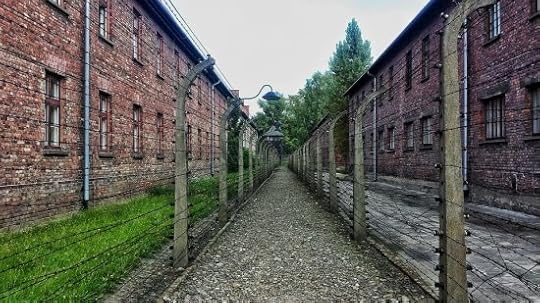
The horrors of World War II are hard to forget, but even more so when we remember that more than six million Jews were murdered by the Nazi regime and its collaborators. That grave crime is called the Holocaust. The word has a Greek origin and literally means “sacrifice by fire.” The Nazis’ belief that Jews threatened the purity and superiority of the Aryan race led to this atrocity.
During my childhood, we hardly heard anything about the Holocaust as the war raged on. My parents and the refugees in the neighborhood did not discuss it either. My first exposure to this horror was through a film shown in 1945 at a private neighborhood club on Twenty-Ninth Street near Surf Avenue. On a hot summer day, I sneaked into the venue, knowing that a movie will be shown outdoors after dark. The Cresco Club mostly catered to seniors, giving them a place for playing cards and sharing experiences. Since a small fee was required and I had no money, I found a way to get around it. I remembered how I scaled the high chain-link fence and disappeared into the crowd. As a small quiet kid, nobody paid attention to me.
Compared to the previous movies I had watched like Frankenstein and the Wolf Man, this film was more real and macabre. Standing at the back, I recall vividly how the audience moaned.
My next encounter with the Holocaust was when I volunteered to assist Ms. Muriel Newton during my stay at Abraham Lincoln High School. Ms. Newton was our English teacher. I was appointed to be the club monitor during one free period several times a week. During those times, I unboxed, organized, and sold books and then repackaged them for the next day’s sale. It gave me the chance to examine the pocketbooks on display and purchase books of interest.
Apart from all the book written by George Gamow about cosmology, I also chanced upon Scourge of the Swastika by Lord Russell, an observer at the Nuremberg Trials. It was my second exposure to evil. The book was an account of the Holocaust based on testimony of the survivors. I cannot imagine how the children of the Holocaust must have gone through. It was difficult to read the book in one sitting. The reading experience upset me and gave me nightmares afterward. Sometimes, I fantasized rescuing the Jews and killing the Nazis.
Years later, Dorothy and I visited Theresenstadt and Auschwitz during our trip to Prague. She smelled or imagined she smelled the smoke. After fifty years from school, I acknowledge there is evil in the world for which no excuses are acceptable and use of force is necessary. When I was employed by the Department of Defense, I thought I was fortunate to be in a position to strengthen the forces of the United States that may be used to discourage or even defeat those evildoers.
The aftermath of the Holocaust affected society deeply, from Europe to the rest of the world. It is a grim reminder of the dark times and a lesson to us all never to let it happen again.
If you want to learn more about the Holocaust or look back into the past, you can find me on Facebook, Twitter, or Goodreads. Grab a copy of From Brooklyn New York To Brookline Massachusetts now!
The post Introduction to the Holocaust appeared first on The Odyssey of Sydney Krimsky.
December 12, 2017
Life Lessons from my Parents
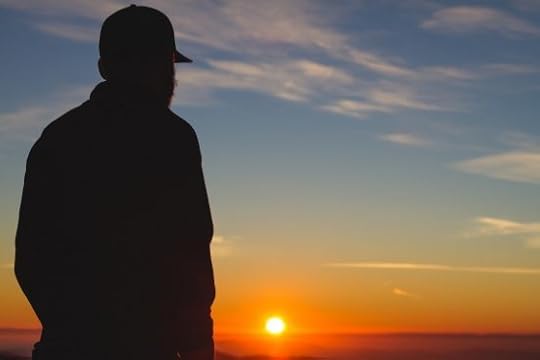
I am a first-generation American. Both my parents migrated to America, leaving behind a place they used to call home in the hopes for a better future. Their lives were shaped by daily struggles which gave me and my brother life’s most important lessons. Our parents were hardworking individuals who shaped their own destiny. I learned important life lessons from both of them, which molded my personality as a person.
I saw my father work as a painter. He would often take me along to his work site, and I would assist him by painting the inside of the cupboards since no one would pay special attention to them. He thought it was one of the most valuable life lessons for me so that I would work exceptionally hard at school in order to not become a house painter. I tried my best but could never become as dexterous as him. He was proficient and neat. His dedication to his work taught me to never back down in the face of adversities. My father would seldom complain about the drawbacks in his life. I learned responsibility from his example.
I often tried to emulate my father in terms of how he worked. I also began trying to help around the house by fixing things for my mother like he used to. They also set an example for me and my wife Dorothy through the way they handled their finances. Since Mother had a knack for numbers, Father handed over all the money to her to take care of all our needs. This trust proved to be beneficial for my relationship with my wife as she became the person who handled the finances in our marriage.
My mother was a tough woman. She was brought up by her aunts after her mother passed away and came to America at the age of fourteen. Troubles at home because of her relationship with her stepmother prompted her to quit school and take up a job at the age of sixteen. She met and married Father and dedicated her life to making our lives comfortable. She cared for me, my brother Sheldon, and my father by keeping the house, making our food, and washing clothes.
After father passed away, my mother took up a job as a seamstress to support herself. She worked hard both outside the house and within it. Her resilience and strength were some of the most important lessons in life to which I was introduced. She kept going, waking up, preparing her food, taking the subway to work until she was finally eligible to receive social security at the ripe age of sixty-two.
My mother and father faced unimaginable difficulties in order to help me and my brother lead respectable and comfortable lives. Their sacrifices, their determination to survive, and their willingness to go to any lengths to support their family were important life lessons for me that I will always treasure and strive to live by.
What are some of the stories behind the most important life lessons in your life? Share these lessons with us in the comments section below. You can also find me on Facebook, Twitter, or Goodreads. Grab a copy of From Brooklyn New York To Brookline Massachusetts now!
The post Life Lessons from my Parents appeared first on The Odyssey of Sydney Krimsky.
December 5, 2017
My Introduction to Jewish Education
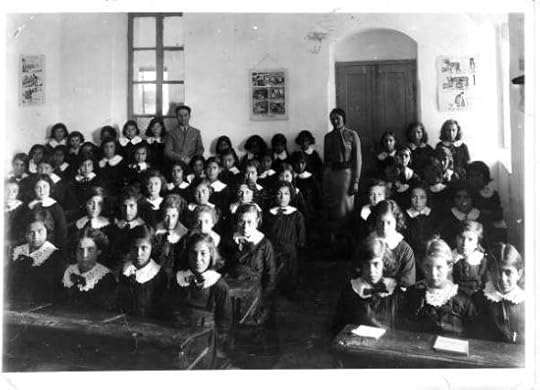
I am a first-generation American who grew up in an America very different from now. All immigrants knew that their children had a better shot at making it in life in America than any other place in the world. Amid the great need to move to the land of opportunities and the events in Germany which scarred Jewish immigrants, there was a rising sense of aversion to spirituality. Religious yeshivas focused on Jewish education were considered obsolete in the new-age America where one had to grasp modern education in order to progress economically.
The shuls, or Jewish education centers, in the localities saw a decline in attendance over the years and were slowly demolished to make way for new buildings. I became a bar mitzvah in the shul in Coney Island on West Nineteenth Street, which was also demolished later. Though my parents never spoke to me in Yiddish and always tried to speak English, my grandfather introduced me to Yiddish. He was fond of me, and I visited him often for Shabbos.
In February 1946, my mother enrolled me in class aleph at the Sea Gate Sisterhood and Talmud Torah on West Twenty-Third Street and Mermaid Avenue in Coney Island. My first brush with Yiddish was at the Coney Island shul where we were made to translate the Chumash into Yiddish. I found the entire process excruciatingly painful as I had no appetite for rote learning. We were instructed to read Hebrew and Yiddish without understanding the meaning. They would make impassioned appeals for donations to run the shuls frequently by making a visit to the streets.
Our teachers taught us about the displaced people and the heroic efforts of the Haganah, transferring Jews to Palestine. We were encouraged to help by collecting canned goods from houses, which would be collected in the basement of the Hebrew school, and dispatched for Israel on a ship. We would collect Del Monte canned vegetables and tins of sardines and load our trolleys and return to the school. All the people knew about the “Food for Israel” program. Sometimes during the summer months, a flat truck would go around trying to collect grants for Jewish education from the people. They would receive donations, and I never saw them hand out receipts. The trust between the people was heartwarming.
I finished my Jewish education and had my bar mitzvah. I would only learn later that my Jewish education was wholly inadequate. In hindsight, from what we now know about Jewish education during that time, I feel that I am not to be blamed entirely for this. The teaching methodology which relied on rote learning was not very conducive for learning.
Did you also get a chance to learn at a Jewish education center? What was your experience like? Share what you have gone through in the comments section below. You can also find me on Facebook, Twitter, or Goodreads. Looking for stories about life of a first-generation Jewish immigrant in America? Grab a copy of From Brooklyn New York To Brookline Massachusetts now!
The post My Introduction to Jewish Education appeared first on The Odyssey of Sydney Krimsky.

